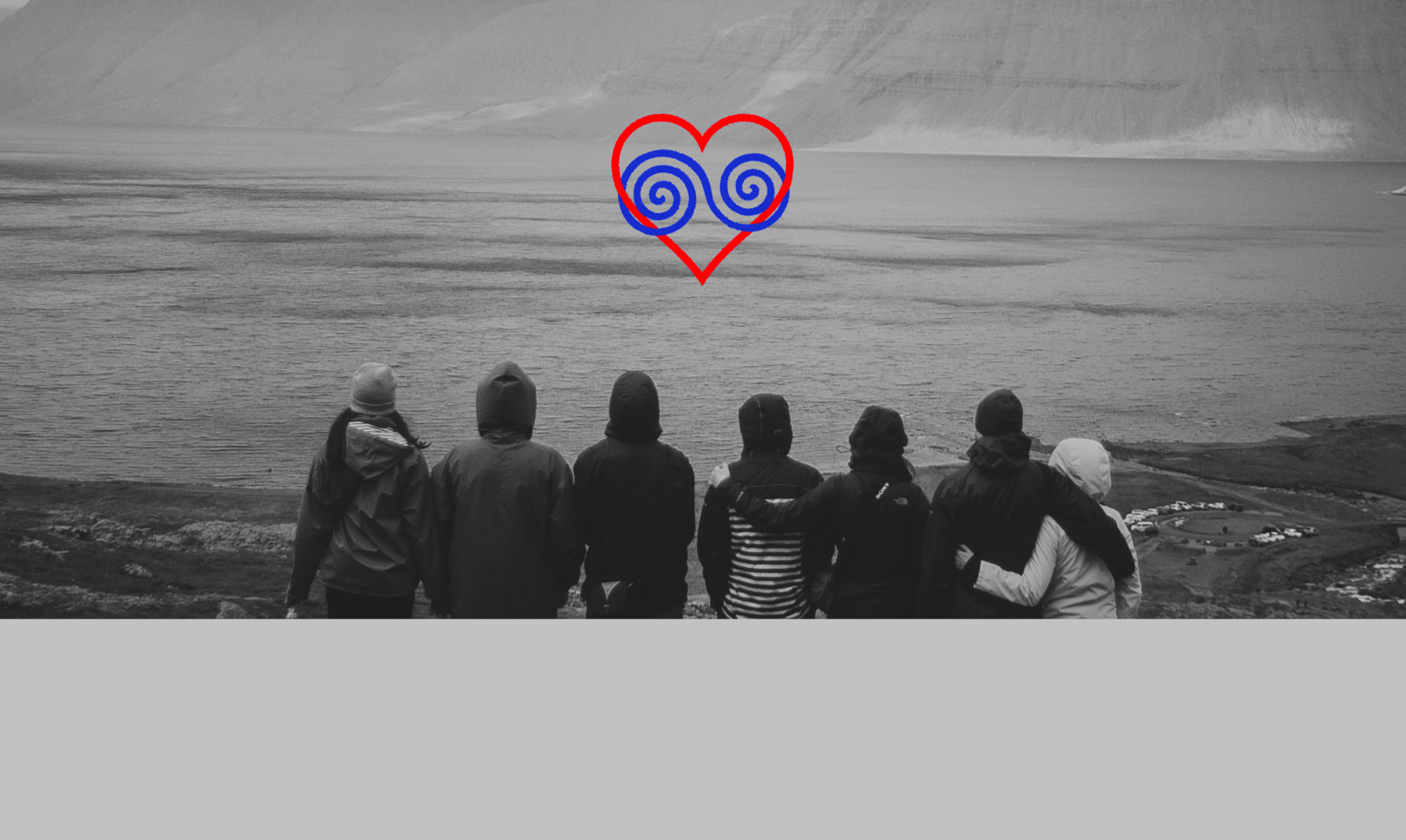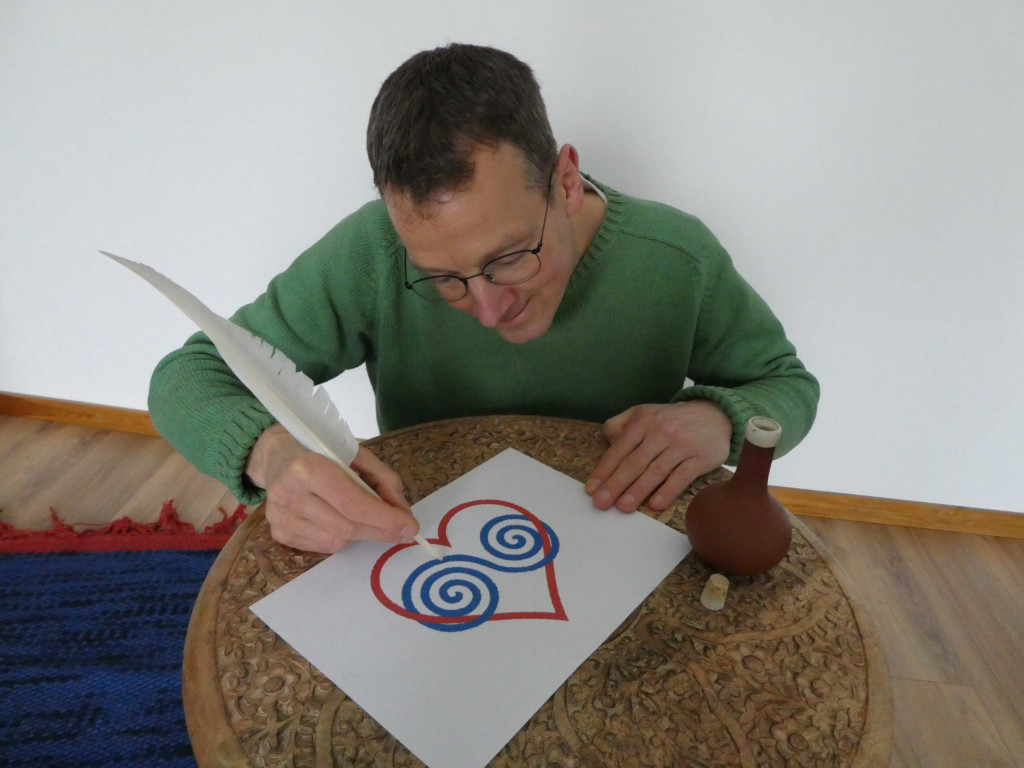Undetected leitmotif*…

“Polyamory isn’t for me. If I want to disappoint two people at the same time, I’ll visit my parents.”
This sentence I read last month in a forum about different types of relationships – and I have probably never seen a more terrible confession regarding the attitude towards multiple relationships.
Whereby “terrible” is of course again a highly subjective choice of words on my part. I could also have written “enlightening” or “interesting” – because according to the “Four-sides model” of the German communication psychologist Friedemann Schulz von Thun, every message contains a self-revelation, which first and foremost unveils something about the person speaking.
And thus the above statement is also immediately contextually far less hair-raising than it might appear at first glance. Rather, it speaks volumes once again of how much we – confronted with multiple relationship patterns (or even thoughts thereof!) – very quickly see ourselves in emotional spheres of family constellations. Above all, however, probably if we have experienced asymmetries there in our biography with regard to claims, entitlement, trust or belonging.
For a mammal like Homo sapiens, its own small human bunch is the most primordial and first learning space in terms of family relationships (as “familiar” still means “well-known/trusted”). And this is not only about the positioning of one’s own “self ” in such a structure or the development of individuality. Because inseparably connected with this, a developing being also perceives all dynamics of internal relationships IN such a (family) structure, which gradually will form a repertoire of own (possible) roles and role reaction patterns.
Unfortunately (especially when it came to negative experiences) we were not mere spectators of such happenings. The supposed spectacle was often literally too close to us. And not only when we ourselves were directly affected, e.g. by a fearful, dismissive or preoccupied attachment style of our parents (e.g. Entry 14). Just as often, we certainly had a possibly unavoidably uncomfortable front row seat to dramas that played out between our parents, between any siblings – and our parents – or we were again directly affected when it came to resonances between existing siblings and us.
Especially in nuclear families, as we have mostly formed them since the beginning of modern times, conflicts arising from this often presented themselves – despite several parties possibly involved – as merely two-sided affairs, in which the focus was not infrequently on “being right” or ultimately only about “winning” (the latter also readily secured by an allocation of “blame”).
Such “two-sided affairs” have, moreover, most probably also accompanied later all those readers into their monogamous relationships (i.e. me as well) who have not from the beginning entered into a multiple relationship consisting of several equally positioned partners [and to this group I would like to apologize a bit here, because I can indeed not contribute so much about their basic relationship patterns from my own non-experience].
In my opinion, the seduction of carelessly agreed and unconsciously executed monogamy (and from my point of view this concerns more than 90% of all monogamous arrangements) even consists precisely in the fact that it favours “win-lose” situations¹ in case of conflict – by the only permitted concession of only two participants – and thereby nonetheless ensures continued operability. In other words, one of them gets its way – and the other one backs down for the sake of peace (meaning: in order not to jeopardize the overall performance).
Accordingly, when I read a sentence today in which someone equates a multiple relationship with the relationship to one’s own family, I immediately and involuntarily think of the image of a family table with a tablecloth on it that is too small, which it is pulled by two ends in such a way that it is a matter of one party trying to cover its side of the table nicely – at the expense of another party (which is also tugging at the cloth), which in the end should not and cannot succeed – and which in the last consequence will thus also look stupid and literally “exposed”, so to speak.
Especially all those experiences in which we have ever perceived ourselves of being “on the losing side” in such a way have thus contributed to a kind of “inner registry” that the psychologist Dr. Verena Kast calls “resentment” in my Jealousy-Entry 36. To repeat: “resentment” (from French re-sentir) – a repeated re-experiencing of an internalized, generalized conflictual experience that is emotionally emphasized and linked to a particular relationship theme.²
The ugly thing about “resentments” here is that they create in us, so to speak, a sort of ever-present “emotional preserve”: I disappointed my parents once when I was 17 (maybe I chose a different education than they wanted and wasn’t supported), I disappointed them when I was 25 (raised eyebrows when I chose where to live, there were hardly any visits…) – and if I will meet them tomorrow, I’m sure to disappoint them all over again by some means (even if I’m 48 now and they’re almost 80…).
The idea of being in an intimate relationship with two (or more) people can then quickly be perceived as similarly stressful: Then I would have (e.g.) two favourite people in my life…, …certainly I could never satisfy both of them…, ….both would make me feel that in their own way (negatively) for sure…, …that is something I don’t want to experience any more.
Objectively, the two situations are not related in time or occasion: But our resentments do not care, because our brain can involuntarily switch the setting with them due to their “generalized” (see above) – i.e. simplified/schema-like – nature.
Resentments, therefore, make use of our fears in the sense that they evoke “re-experiencing moments” when we have “already once” suffered an (approximately similar) defeat or exposure.
While talking about exposure…. A few days ago I had a fascinating dream that seems to me to fit well with today’s topic.
In the dream I was naked with several equally naked people of different sexes in a kind of oversized, waterless shower tub (and no, I never attend either Tantra or Bodywork seminars 😉 ). The other “occupants” of the shower tub seemed to be engaged with each other in some sort of activity – that much was clear – but whether this was merely an intense conversation or even sexual activity apparently didn’t matter to the dream, it remained insignificantly blurred. I, meanwhile, had at my side a likewise unclothed (and quite clearly recognizable) quite pleasant female companion (a dream character who bore no resemblance to any human being I know). We exchanged a few merry words while watching the people across from us in the shower tub. Thereby, we quickly developed a confidential relationship (yay, dreams are something great…) and we moved closer to each other – eventually skin to skin. Finally, I put my head on her arm, which she had rested on the edge of the tub and cuddled more and more to her side. Ultimately, my companion bowed her pretty face to me and began to kiss me extensively, which I gladly returned. A really good, very intimate kiss, by the way, of the “brain reward” type.
Just in this absorbed moment I suddenly had to think of my real favorite person K. in the real world (and also in the dream the existence of K. was consistent) and what she would say about it – and how I would have to explain it to her – and within a fraction of time various scenarios about it piled up in another part of my head. My brain used the opportunity to end the dream with this last impression – and while waking up endowed me with the self-doubt of whether (and how?) I would be able to deal with being desired by more than one person.
For the dream, my brain and my mind, neither nudity nor the intimate situation were in any way shameful. Also, the fact that I had been together with another lover, who was also part of a multiple relationship context, was – if at all – only a trigger. But the question about the ability to cope with the double desire by two people and my (obviously insufficient!) self-efficacy in this context, THAT on the other hand…. …created the actual stress.
“Luxury problems…”, one or the other may now think. For me, however, this is not a luxury problem but a real one, because I struggle within myself with the fact that I am “not enough” (a very exemplary and quite genuine family resentment on my part). And in a multiple relationship context, for example, this can cost me dearly in a moment in which I merely begin to believe that I have to justify myself or my dedication towards an additional partner.
Most people who have already lived with me in intimate relationships could probably predict that I would most likely try to evade such a situation by staying under the radar or by evading/distracting (= flight).
If, however, I should be seriously pushed to an unavoidable statement, there would be the danger – to be honest – that I would become pretty quickly rebellious despite all my oligoamorous wisdom (= fight).
Stress narrows our perspective, takes away equanimity and erases options that we might have had access to if we had a calm mind. Coach and couple therapist Reinhardt Krätzig writes about this phenomenon in his book “With the Key of the Psyche” (published in 2020):
»Our brain experiences stress as evidence of an existing danger. Danger now implies real, perhaps life-threatening danger. In order to be able to face it appropriately, a shift occurs in body and the mind. The sympathetic branch of the autonomic nervous system is activated, we become restless, feel uncomfortable and insecure.
In this state, our heart rate accelerates and our breath is short and shallow. We scan our surroundings, go into fight or flight mode. Now you experience the world more as a dangerous place where you have to protect yourself from harm. In order to survive, all senses must be directed outward, the energy-consuming and much too slow consciousness gets less oxygen, so it is cut back and used only for sense processing. You don’t think about what you’re doing any more, you just do it. The only reference point for action now available is experience. Under stress, these are the experiences from other difficult, demanding circumstances. Since this has been going on all one’s life, one suddenly finds oneself with one foot back in childhood and has as a reference point for present action only the behavioural patterns developed at that time in response to difficult situations.
Caution. This happens not only in the case of major, conspicuous stress that is visible to everyone. Something similar also happens in the case of very subtle stress, especially that which arises when one’s own life issue is being touched. Everyone at some point has experienced a partner suddenly falling into a strange mood. In most cases, something had touched a sensitive spot in the psyche of the other person. This immediately triggers this stress mode, combined with recourse to childhood coping patterns. To an observer, something like this seems irritating and out of place, but it happens to everyone at some point, including yourself.
When dealing with such a burdened person – for example, a relationship partner who is currently arguing with you – it makes no sense at this moment to appeal to their consciousness or reason and perhaps ask them to pull themselves together. Since the control panel of conscious guidance is currently unoccupied – as long as the subjective suffering continues – nothing can implement the appeals and requests anyway. The most important and strongest resource for self-regulation (consciousness) is not available. This also has nothing to do with a lack of will, slackness or laziness. The question of intelligence does not arise here either. The same thing happens with extremely intelligent people, who are just as limited under stress as less intelligent people.«
Incidentally, the “life issues” characterized by Krätzig could, in his opinion, be identified particularly well in the case of a reaction that was extremely inappropriate to the triggering occasion: So what kind of experience “makes us jump out of our skin”, “drives us mad” or “pulls the rug out from under our feet” ?
In Entry 26, I add that, strictly speaking, our fear of fear makes things seem even more threatening. “Caught by ourselves”, I write there, “an awkward feeling.”
My dream or rather my subconsciousness has uncovered this fact for me once again. Difficulties in dealing with desire? Fear of not being able to satisfy (demands)? When asked about this while awake, I would probably deny it forthrightly, because I don’t really perceive myself that way. But my subconscious has shown me that there is still a (probably not so small) part of me that thinks like that about myself.
In our self-chosen relationships today, our favourite people and lovers are not our parents or siblings of the past. And thus it is beneficial if we are able to realize in a quiet moment that also the former two-dimensionality of conflicts long ago will (hopefully) no longer present itself today in their former pettiness and inexorability of “won” and “lost”.
With goodwill and a portion of self-humour towards ourselves, we can figure out our “life issues”, e.g. by looking at ourselves, when sometimes our “control panel was unoccupied”, when it was hard to talk to us, because a resentment had pulled us into an old world of “who is not in favour of me is surely against me” (or when we tried to smooth the inner churning ocean with the third bar of XXL whole milk chocolate…).
Once we have unmasked a life issue, the chances become better and better over time to deprive it of its exuberant status as the all-dominating (but unconscious) “leitmotif” of our emotional reaction and to gradually diminish it to a clown’s hooter that will only occasionally resound in between.
By the way, Coach Krätzig also has a “positive test” up his sleeve for exploring our life issues: He says that what we ourselves lack (or have lacked) most in life, we often bestow upon others as compensation. Is that care? Comfort or security? Practical help? Loyalty? Community? A sympathetic ear at all times? Or…?
I am curious what you will discover!
* Leitmotif: A melodic theme now often used in film scores or game soundtracks, which almost unnoticed in countless alterattions and variations as an underlying element resonates through the entire music of the corresponding work.
¹ The negative consequences of a “win/lose situation” (winner-loser strategy: lack of willingness on the part of the conflicting parties to find an appropriate, rational solution to conflicts. Provocations, punitive behavior and threats [power] are used in the hope of emerging from the conflict as winners themselves) I already briefly address in Entry 26.
² This wording, as a matter of fact, is derived from the Swiss psychiatrist and the founder of analytical psychology, Carl Gustav Jung.
Thanks to Jonathan Sautter on Pixabay for the photo!










